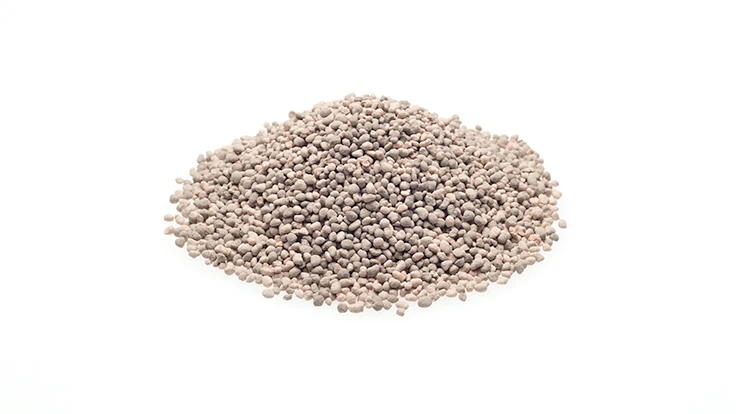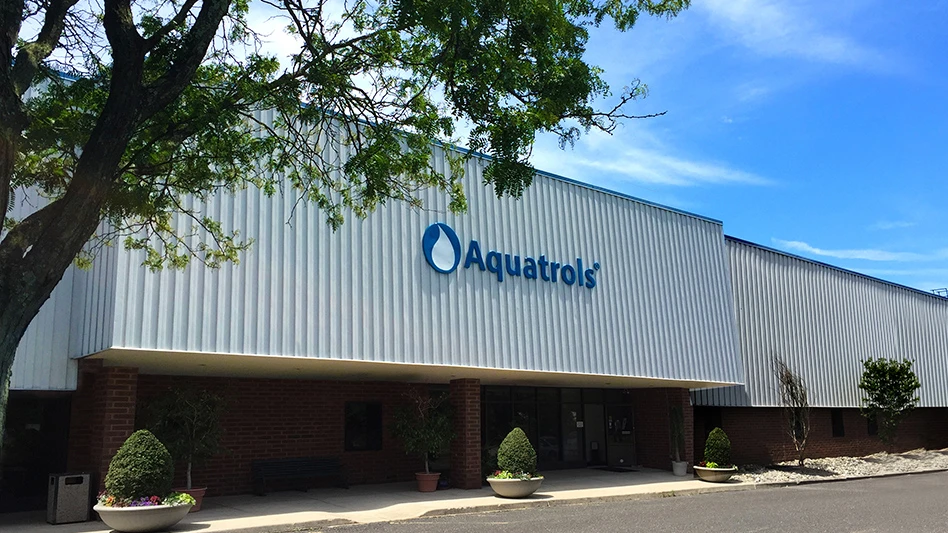
Variety is the spice of life — and as it seems, turf. A superintendent’s ability to make effective fertilizer applications with granular products largely relies on maintaining variation between particle sizes. Generally, larger particle sizes are better for higher-cut turf, and smaller particle sizes are better for shorter-cut turf.
Large granules take longer to dissolve than smaller granules, so superintendents should make decisions about particle sizes based on desired response time, says Dr. Larry Murphy, owner of Murphy Agro and consultant for Compass Minerals. “It’s simply how quickly you want the material to dissolve, how quickly you want a response and if it’s something that you want to be relatively longer-lasting, which could relate to nitrogen material, for instance, that’s going on a fairway or even a rough,” he says. “Then that would be a larger size material.”
Granular fertilizer particles have size guide numbers, which correlate to 10 times the particles’ size in millimeters, Murphy says. Product offerings with higher SGNs are conducive to fairways and roughs, while smaller-SGN products cater more to tees and greens maintenance programs. The finest granular products with the lowest SGNs should virtually always be placed in a tank mix.
When making a dry granular application, superintendents should use a type of spreader that matches with the particle sizes they are applying, says Dr. Nick Christians, professor of turfgrass management at Iowa State University. “A fine usually works pretty good with a drop spreader, but (using) a broadcast spreader, the fines you’ll have a problem with,” he says. “Too large, and you’ll end up with the particles distributed through the turf. On close-cut turf, like bent, that can be a real problem.”

Many finely textured products that companies manufacture for greens need to be applied precisely with a drop spreader, which takes a high level of experience, Christians says. Although it requires more equipment and knowledge, liquid application is often the best method for greens.
In certain situations, such as when using fertilizer and pre-emergent herbicide combinations, a poor distribution of particles can result in inadequate control, Christians says. These types of particles should be an intermediate size and not too large.
On greens, superintendents should apply fine particle sizes to avoid the type of “polka dots” that appear from larger particle applications, Christians says. Such issues are often more about aesthetics than agronomy, but applying large particles to greens can cause uneven nutrient uptake.
Unwanted dots appearing on greens is likely to be less of an issue in the case of improper potassium granular applications than improper nitrogen granular applications, Christians says. “It would be more important as you get to closer and closer mowing heights,” he says. “On higher mowing heights, like the rough, it would probably be less important.”
Compass Minerals sells Protassium+ in multiple granule sizes for golf course turf. The Turf Granular is 197 SGN and is used on roughs and fairways, the Mini Gran is 135 SGN and is used on fairways and tees and the Greens Grade is 105 SGN and is used on greens. The company also sells a Soluble Fines fertilizer that quickly dissolves in liquid.
If superintendents are considering making a liquid application of Protassium+, they are likely to have less trouble with the Soluble Fines than the Greens Grade, Murphy says. “If you’re going to be spraying your potassium, then you’re going to want to use the Soluble Fines rather than anything larger,” he says. “Those are going into the solution easier.”
When only a small amount of fertilizer is needed on highly maintained turf, superintendents should refrain from using granular fertilizer applications, Christians says. Recently, he spoon-fed a green at a rate of two-tenths of a pound of nitrogen per thousand square feet. “Trying to do that in a granular form and getting it right is very difficult, so we mixed up the product in a sprayer and we sprayed it, and then we got very good uniformity,” he says.
Varying between particle sizes makes a difference in turf management, Christians says. “To go with a higher-quality turf product will generally assure that that issue has been taken care of before the product gets to you,” he says.
Patrick Williams is a Cleveland-based turf writer and frequent GCI contributor.
Large granules take longer to dissolve than smaller granules, so superintendents should make decisions about particle sizes based on desired response time, says Dr. Larry Murphy, owner of Murphy Agro and consultant for Compass Minerals. “It’s simply how quickly you want the material to dissolve, how quickly you want a response and if it’s something that you want to be relatively longer-lasting, which could relate to nitrogen material, for instance, that’s going on a fairway or even a rough,” he says. “Then that would be a larger size material.”
Granular fertilizer particles have size guide numbers, which correlate to 10 times the particles’ size in millimeters, Murphy says. Product offerings with higher SGNs are conducive to fairways and roughs, while smaller-SGN products cater more to tees and greens maintenance programs. The finest granular products with the lowest SGNs should virtually always be placed in a tank mix.
When making a dry granular application, superintendents should use a type of spreader that matches with the particle sizes they are applying, says Dr. Nick Christians, professor of turfgrass management at Iowa State University. “A fine usually works pretty good with a drop spreader, but (using) a broadcast spreader, the fines you’ll have a problem with,” he says. “Too large, and you’ll end up with the particles distributed through the turf. On close-cut turf, like bent, that can be a real problem.”

Many finely textured products that companies manufacture for greens need to be applied precisely with a drop spreader, which takes a high level of experience, Christians says. Although it requires more equipment and knowledge, liquid application is often the best method for greens.
In certain situations, such as when using fertilizer and pre-emergent herbicide combinations, a poor distribution of particles can result in inadequate control, Christians says. These types of particles should be an intermediate size and not too large.
On greens, superintendents should apply fine particle sizes to avoid the type of “polka dots” that appear from larger particle applications, Christians says. Such issues are often more about aesthetics than agronomy, but applying large particles to greens can cause uneven nutrient uptake.
Unwanted dots appearing on greens is likely to be less of an issue in the case of improper potassium granular applications than improper nitrogen granular applications, Christians says. “It would be more important as you get to closer and closer mowing heights,” he says. “On higher mowing heights, like the rough, it would probably be less important.”
Compass Minerals sells Protassium+ in multiple granule sizes for golf course turf. The Turf Granular is 197 SGN and is used on roughs and fairways, the Mini Gran is 135 SGN and is used on fairways and tees and the Greens Grade is 105 SGN and is used on greens. The company also sells a Soluble Fines fertilizer that quickly dissolves in liquid.
If superintendents are considering making a liquid application of Protassium+, they are likely to have less trouble with the Soluble Fines than the Greens Grade, Murphy says. “If you’re going to be spraying your potassium, then you’re going to want to use the Soluble Fines rather than anything larger,” he says. “Those are going into the solution easier.”
When only a small amount of fertilizer is needed on highly maintained turf, superintendents should refrain from using granular fertilizer applications, Christians says. Recently, he spoon-fed a green at a rate of two-tenths of a pound of nitrogen per thousand square feet. “Trying to do that in a granular form and getting it right is very difficult, so we mixed up the product in a sprayer and we sprayed it, and then we got very good uniformity,” he says.
Varying between particle sizes makes a difference in turf management, Christians says. “To go with a higher-quality turf product will generally assure that that issue has been taken care of before the product gets to you,” he says.
Patrick Williams is a Cleveland-based turf writer and frequent GCI contributor.
Latest from Golf Course Industry
- Heritage Golf Group expands into Tennessee
- Making the grade — at or near grade
- PBI-Gordon receives local business honor
- Florida's Windsor takes environmental step
- GCSAA names Grassroots Ambassador Leadership Award winners
- Turf & Soil Diagnostics promotes Duane Otto to president
- Reel Turf Techs: Ben Herberger
- Brian Costello elected ASGCA president





